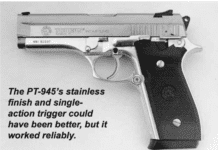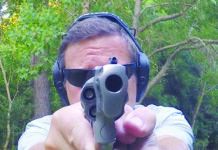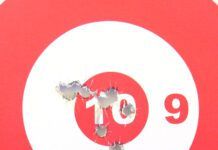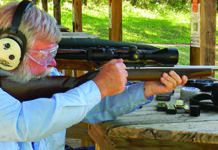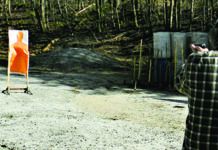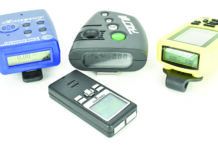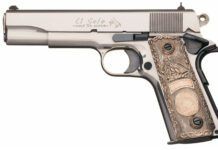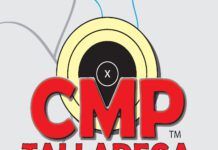GunReports.com Video: Crimson Trace’s The Art of Survival Laser Sight Training
Crimson Trace's The Art of Survival training video has Julie Goloski talking to two gun owners about laser sight training that works.
GunReports.com Video: Mounting a New Riflescope
Mounting a new scope on your rifle is not difficult but does require the correct tools, the right procedure and a few tricks of the trade.
Leupold, Bushnell Settle Lawsuits
(GunReports.com) -- Leupold & Stevens, Inc. announced that it has reached an agreement that will settle its lawsuits with Bushnell Inc.
GunReports.com Video: Ruger Tactical Tips Part-7: Proper Training (2:49)
GunReports.com presents a Ruger video: Proper training is essential for good gun technique. This series is a collection of self-defense tips with career law enforcement officer Dave Spaulding designed to help individuals learn proper skills and techniques to defend themselves.
GunReports.com Survey-Response Drawings OFFICIAL RULES
GunReports.com conducts periodic surveys of topics of interest to firearms owners. As a thank-you for voting in the survey, GunReports.com enters voters into a free drawing for an AWESOME and usually high-cost firearms accessory. These rules specify the terms for the giveaway.
LaserLyte, Ka-BAR Offer New Pistol Bayonet
(GunReports.com) - LaserLyte, in association with Ka-BAR, offers the first pistol bayonet for select North American Arms pistols.
Special Offer for NRA Certified Instructors Available from Revision Eyewear
(GunReports.com) -- The National Rifle Association's Training Department is pleased to announce a special offer from Revision Eyewear. Through this new offer, NRA Certified Instructors and Appointed Training Counselors will be able to purchase products from Revision Eyewear at a discount of 20%, with 10% of the net sales benefiting the NRA Firearms and Marksmanship Training Endowment.
June Gun Tests Issue: One 22 LR Conversion Kit Gets An ‘A’ Grade
Three 22 LR conversions for centerfire pistos earned 'buy' recommendations in the June 2010 issue of Gun Tests, says its editor, but the magazine showed a strong preference for one unit.
Hundreds Weigh in on GunReports.com Survey Question: Is the 9mm Sufficient for Self-Defense?
Hundreds have answered the GunReports.com survey question: Is the 9mm Sufficient for Self-Defense? They are entered to win a $225 Insight Technology X2l Subcompact Laser/Light MTV-100-A1. Voting closes June 21, 2010.
GunReports.com Video: Choosing Basic Personal Carry Gear
This video series is a collection of self-defense tips with career law enforcement officer Dave Spaulding designed to help individuals learn proper skills and techniques to defend themselves.
New “Miss September” Feeding Elk by Montana Decoy
(GunReports.com) -- Feeding poses have been proven effective during any phase of the hunting season and the all new Miss September Elk Decoy from Montana Decoy combines that potent pose with HD photography.
New Holsters for Kahr P9 with Crimson Trace LaserGrip
The following holsters are now available from DeSantis Holsters for the Kahr P9 with Crimson Trace LaserGrip:




